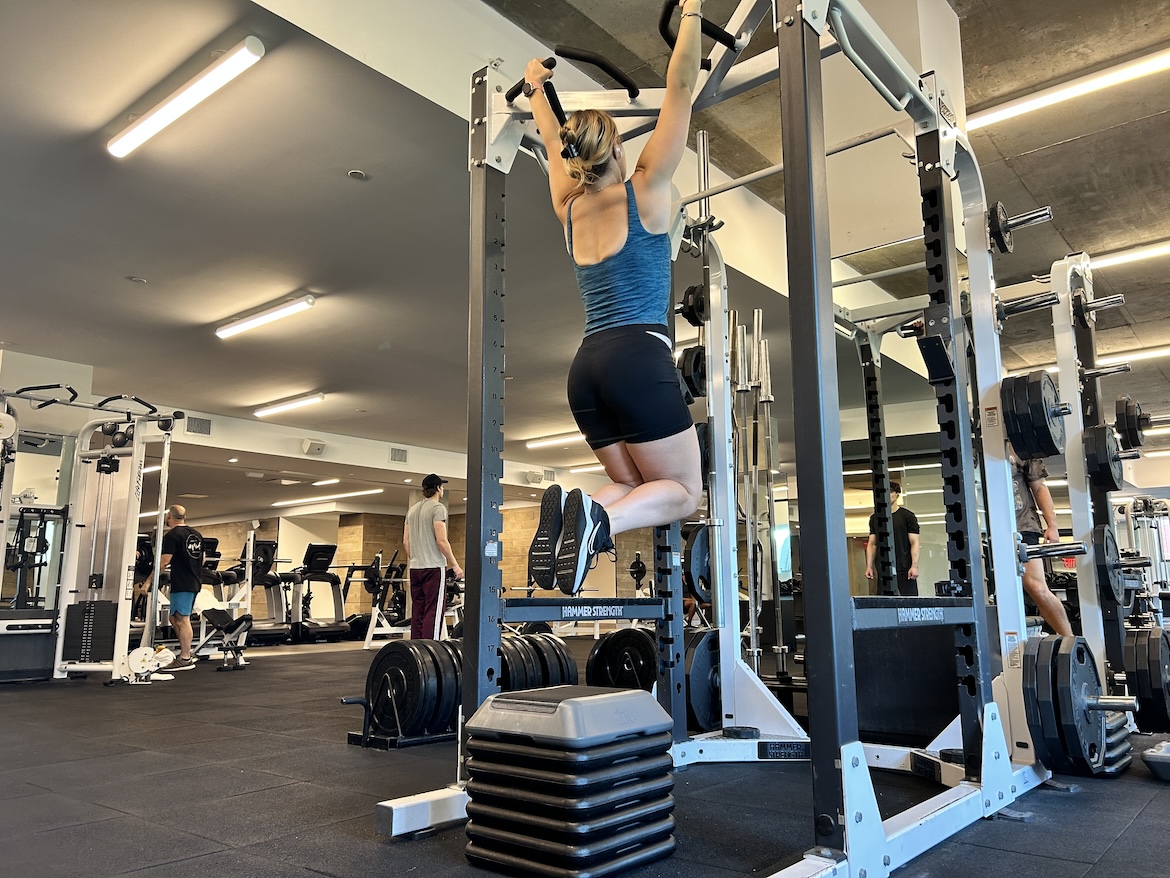Have you heard of “Zone 2” training? This buzzy style of cardio exercise is backed by a variety of experts in the wellness space. Mostly, people extol the benefits for your heart health and stamina. But Zone 2 training can also help with things like glucose spikes and even insulin sensitivity, according to dietitian Heather Davis, RDN, LDN. She regularly advises clients on using this form of exercise to maintain optimal health, and recently sat down with Well+Good to explain the more nuanced benefits of Zone 2 training from her vantage point.
What is Zone 2 training?
Fitness experts break up exercise intensity into five heart rate zones, with Zone 5 being your all-out-sprinting, heart-pounding-out-of-your-chest state—or 90 to 100 percent of your max heart rate. Zone 1, on the other hand, is your gentle warmup, brisk walking state—50 to 60 percent of your max.
The exact numbers depend on your personal heart rate range, but no matter your age or fitness level, Zone 2 will fall into the category of moderate-intensity cardio. Not HIIT, but not a yin yoga class, either. Think more along the lines of a slow, relaxed jog or easy bike ride. That middle lane keeps your heart between 60 to 70 percent of your maximum heart rate, aka Zone 2.
The most basic way to calculate your own maximum heart rate is to start with the number 220 and subtract your age. Let’s say you’re 30 years old: Your maximum heart rate, on average (again, everyone is different) would likely be 190 beats per minute (BPM). Take 60 to 70 percent of that number, and you’re at 114 to 133 BPM. You’ll want to monitor your heart rate during exercise to get an idea of what that feels like, but that’s your golden range, so to speak, for Zone 2 training.
The big 3 benefits of Zone 2 training
1. Increased insulin sensitivity
Perhaps one of the most intriguing aspects of this type of exercise is how it can impact your insulin sensitivity; impaired insulin sensitivity, or insulin resistance, is something that is connected to type 2 diabetes, prediabetes, polycystic ovarian syndrome, metabolic syndrome and more. Effectively, higher insulin sensitivity means better blood sugar control, and lower sensitivity (ie, resistance) means the body has a harder time regulating those blood glucose levels.
“Research shows that blood glucose control and fasting glucose may be positively impacted by Zone 2 exercise,” says Davis. Why this happens is somewhat of a mystery. One 2016 research paper posited that “one possible explanation involves enhanced metabolism of fatty acid stores in the skeletal muscle.”
But Davis warns that these effects are dose-dependent. Not only do you want to hit that moderate intensity, you also want to aim for a moderate amount of exercise. “The health benefits occur at a certain level, and more is not always better,” says Davis. “There’s a sweet spot!”
How do you know if you’ve passed that sweet spot? Davis says some signs to watch out for include:
Fatigue (especially chronic fatigue patterns)
Poor sleep
Mood imbalances
Gut health and digestive issues
Brain fog or difficulty with cognitive function
2. Reduced glucose spikes
Zone 2 workouts can also have immediate, short-term effects on your blood glucose, potentially mitigating the impact of a carb-heavy meal. “If you do some [Zone 2 training] after your meal, you may actually see this activity help reduce a post-meal glucose spike,” says Davis. This is because your muscles may use the glucose you just deposited into your body as fuel for your workout.
Keep in mind: “Many things—beyond just the type of exercise—may impact how glucose levels respond to your workouts,” says Davis. “So when evaluating a glucose response, it’s a good idea to consider the big picture.”
That picture should include how and what you eat before and during workouts. “If you are doing a fasted workout, this may actually cause glucose to spike higher during your workout as the body detects depleted fuel reserves and drives cortisol up in a stress response—and cortisol will drive glucose output,” she says. (Yes, the opposite of what many people might expect.)
3. Better mitochondrial function
Zone 2 training can also improve your mitochondrial function, says Davis. In layman’s terms, better mitochondrial function helps you feel more energized for your workouts and physical activities. Mitochondria is known as the “powerhouse of the cell” because it’s like the energy factory for your body; improved mitochondrial function translates to feeling less fatigued when you’re moving.
“Mitochondrial function has a close relationship with insulin sensitivity, as well as with maximal oxygen uptake (VO2max), which is a primary indicator of aerobic fitness,” says Davis. Basically, the cell powerhouse we know and love, when powered up by Zone 2 training, can improve your stamina and overall health.
But don’t forget, Davis adds, “We see the dose-dependent effect in play.” More doesn’t equal better! There’s a threshold just like for those insulin sensitivity benefits.
Should you try Zone 2 training?
Whether you’re concerned about prediabetes and insulin sensitivity, trying to work through a glucose spike in a healthier way, or want to feel more energized, Zone 2 training might come in handy. And the best news is, there isn’t one type of activity that falls into this category. You can find the style of movement that works best for you, whether that’s biking, swimming, or dancing to Beyoncé.







